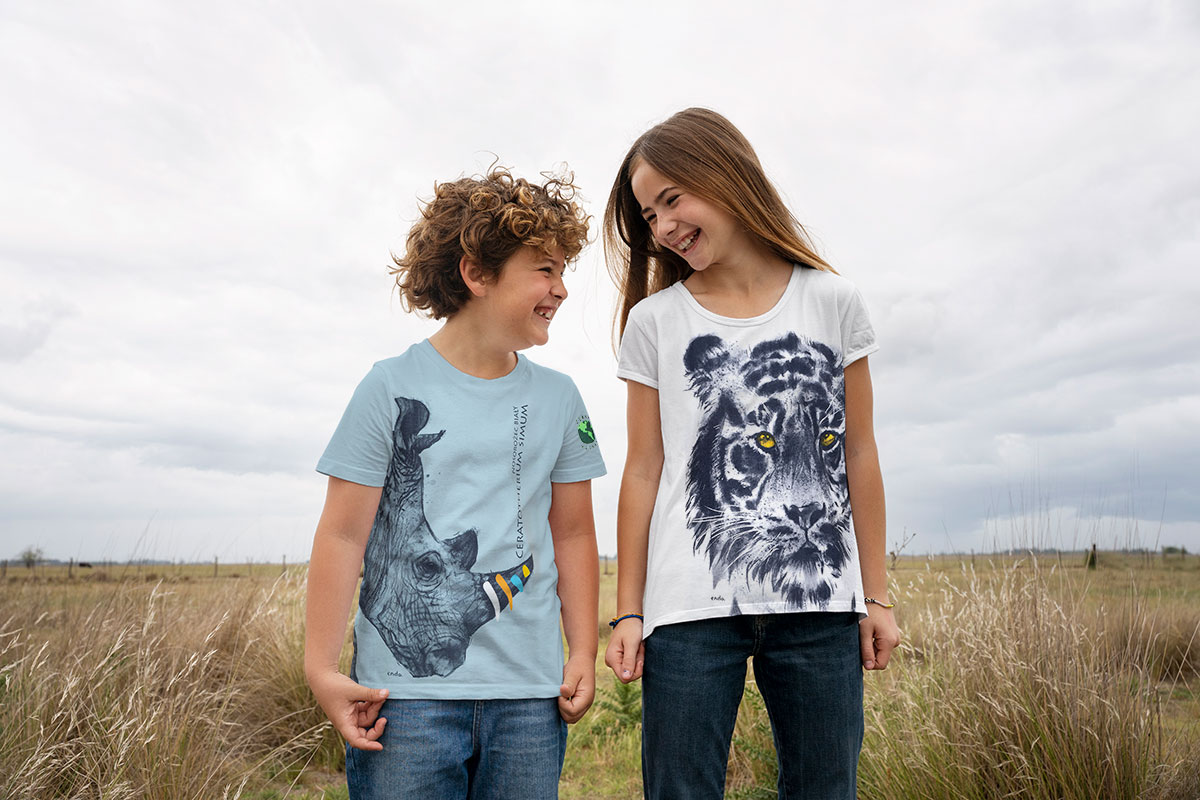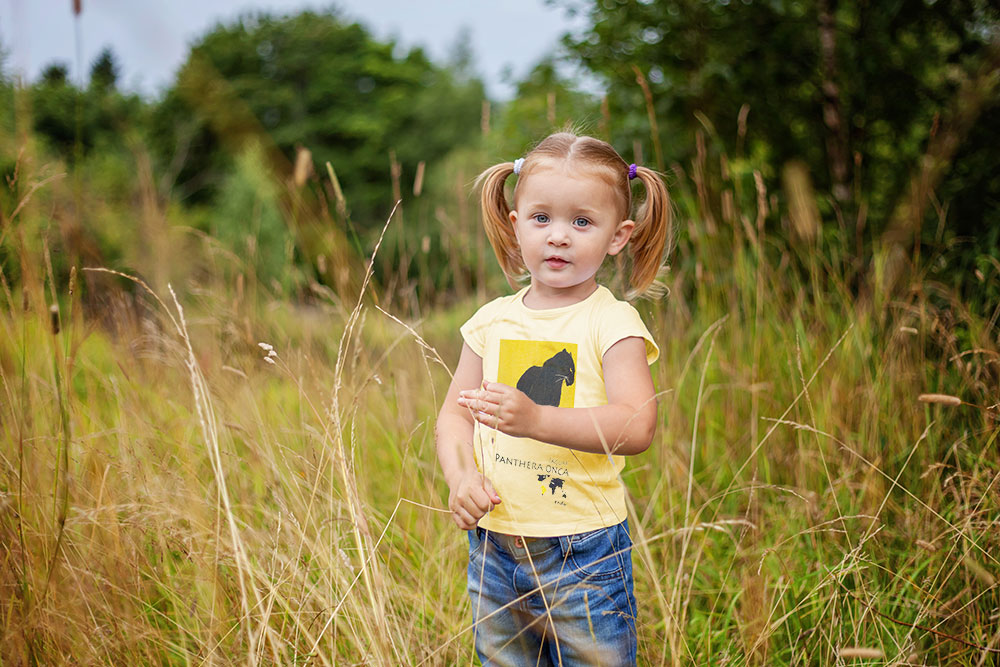
Imagine the journey of your dreams. A natural world where you immerse yourself among exotic plants and observe the lives of their wild inhabitants.
First, let's explore the vast expanses of the African savanna. This beautiful landscape, covered with tall grass and sparse trees, is roamed daily by magnificent animals such as the white rhinoceros, African elephant, cheetah, and lion.
We can observe a rhinoceros with its offspring at a watering hole. Its unique horn protects it from predators, and although it gives it a menacing appearance, in reality, this enormous animal feeds almost exclusively on grasses. A little further on, you spot a group of majestic giants. The African elephant is the largest land animal in the world and has a gentle nature. Did you know that they are one of the few species capable of comforting their grieving companions? But there's no time to dwell on this, as a quick whistle interrupts our thoughts. It's a cheetah, the world's fastest, racing through the dry grass. Along the way, it slips past a lion resting in the sun, lazily surveying its domain.

Let's change the scenery and head to the tropical jungle. Hear those funny sounds? Those are playful chimpanzees roaming the branches of tropical trees. Below, you can spot a black, hairy giant, the largest of the primates: the western lowland gorilla.
Let's now travel to other continents in search of wild felines. In the rainforests of South and Central America we can encounter the black panther and jaguar, and in the rainforests of Asia we can find the world's largest cat, the tiger.
This beautiful, fairytale world is our wonderful planet, which, in areas sparsely inhabited by humans, serves as a stage for incredible wildlife. Unfortunately, the presence of humans doesn't always have a positive impact on its other inhabitants. All the animals we encountered during our "expedition" are currently considered endangered. Therefore, these species must be monitored with exceptional vigilance and sensitivity so that they can enjoy a life in the wild in a favorable environment in the future.
Education campaign - learning about endangered species
It is precisely so that our children and grandchildren can enjoy the beauty of nature in the future that Endo's "One Planet" collection was created. These unique T-shirts showcase the beauty and value of endangered species. The collection aims to educate children about the importance of protecting nature and caring for endangered species, and that these threats are often the result of human activity.


Why is it important to teach children about endangered animal species?
Environmental education is crucial. From a young age, children should understand that every animal is a valuable part of our planet, and each species is unique and important to the ecosystem. Unfortunately, many species are threatened with extinction, primarily due to human activity. Habitat destruction, poaching, climate change, and environmental pollution are just some of the factors contributing to the decline of animal populations.

Animals threatened with extinction
The "One Planet" collection focuses on wild animals from different continents, from savannahs, rainforests, and tropical forests. Meet our heroes.
White rhinoceros
The white rhino is an impressive animal native to Africa. It is the largest rhino species in the world, weighing up to 2.5 tons. The rhino's most distinctive feature is its horn, or rather two horns: a smaller one and a larger one adorning the center of its nose. Did you know that the larger horn can reach the size of a child? Yes, rhino horns can grow up to 1.5 meters! At the end of the 19th century, white rhinos were on the verge of extinction, but since then their population has been actively protected and rebuilt. Over 20,000 rhinos have been restored from a few dozen individuals.
Lowland gorilla
The western lowland gorilla is one of the largest primates on Earth. An adult male can weigh up to 200 kg, and its strength and impressive appearance earn it the title "king of the jungle." The western lowland gorilla lives in the humid equatorial forests of Central Africa, where it feeds primarily on leaves and fruit. Interestingly, western lowland gorillas can reach speeds of up to 40 km/h, an unbecoming trait for such a large and heavy animal. Unfortunately, western lowland gorillas are endangered, primarily due to poaching and habitat loss.

African elephant
African elephants are another endangered species. These elephants are among the largest land mammals and can weigh up to 6 tons. Elephants are highly intelligent and capable of feeling emotions. Interestingly, they don't need telephones to communicate with other herds over long distances. By stomping the ground, they emit vibrations that can be picked up by other members of the species located far away.

Cheetah
The cheetah is the fastest feline and one of the most beautiful predators. What does it have in common with the fastest car in the world? It can reach 100 kilometers per hour in 3 seconds. Unlike their other feline cousins, cheetahs are the only wild cats that do not attack humans, which is why domestication has occurred in the past.
Black Panther
Black panthers are the common name for jaguars, which are almost black in color, though up close they can be spotted, similar to those on regular jaguars. Black panthers constitute only about 9% of the jaguar population, but apart from their color, they are indistinguishable from them in every way. Jaguars live primarily in South America, but are also found in Mexico and the United States.


Common chimpanzee
Common chimpanzees are humans' closest animal relatives. They are highly intelligent and social, and their behavior indicates a capacity for thought, planning, and emotion. Chimpanzees' ability to use tools such as sticks and stones to obtain food demonstrates their exceptional intelligence.

Lion
The lion is the king of the African savannah , one of Africa's most powerful predators. Lions are not only strong and dangerous animals, but also very cunning. They can plan their attacks and demonstrate great intelligence. They are one of the few predators that hunt together, allowing them to take down larger animals than they could alone.
Tiger
These beautiful cats are known worldwide for their beautiful coat and immense strength. They live in Asia and are the largest felines in the world. Tigers have excellent hearing and vision, but their sense of smell is even better. They can smell prey from over a kilometer away! They are one of the few cats that enjoy water. They often bathe in streams, rivers, and pools to cool off and escape the heat.

How can children help protect endangered species?
Children can help protect endangered species too! Here are some ways to do so:
- Learn more about endangered species - the more you know, the easier it is to take action.
- Support animal welfare organizations - you can start by donating a small amount or organizing a fundraiser among friends and family.
- Educate others - tell your friends and siblings about endangered species and how you can help them.
- Prevent the illegal sale of wild animals and their body parts - never buy products made from the bones, fur or skin of endangered species.
- Take care of your environment - avoid using too much water, segregate waste, carry out clean-up actions in the park or on the beach.
- Be active - join a volunteer organization that is involved in the protection of endangered species or conducts educational campaigns.
Remember that every gesture of help is important and can have a positive impact on the protection of our wild friends.



Podziel się:
Active and colorful. Educational games for children at home.
Why listen to podcasts? - The best nature podcasts for kids